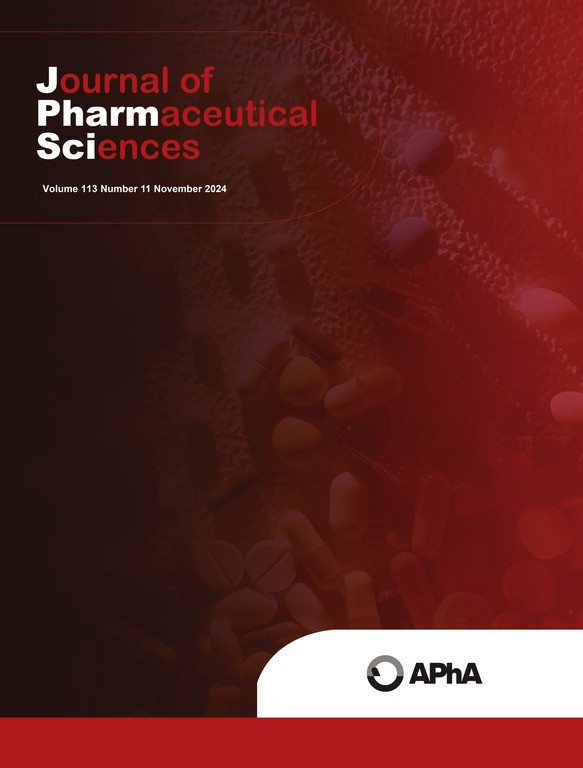Structural studies on the interaction of CTAB with alginate: Possibility of surfactant therapy with chemo sensitization effect
IF 3.7
3区 医学
Q2 CHEMISTRY, MEDICINAL
引用次数: 0
Abstract
The present study reports the preparation of sodium alginate-cetyltrimethylammonium bromide (CTAB) nanoparticles (SANPs) through the interaction of a fixed concentration of alginate (0.2% w/v in water) with two different concentrations of CTAB i.e., below (0.4 mM) and above (1.2 mM) critical micelle concentration (CMC) and the elucidation of its structure on the basis of dynamic light scattering, transmission electron microscopy, small angle neutron scattering and zeta potential measurements. The results indicated that the concentration of CTAB dictated the hydrodynamic shape and size of SANPs. While both the micellized (> CMC) and monomeric forms (< CMC) of CTAB resulted in the formation of negatively charged near spherical particles, the SANPs containing micellized form of CTAB exhibited smaller and more compact hydrodynamic structure compared to those containing monomeric form of CTAB. The cytotoxicity studies involving cancerous cell lines (A549 and L132) indicated that the anticancer activity of CTAB was retained in the SANPs. Subsequently, encapsulation of doxorubicin (DOX), a potent anticancer drug in to SANPs enhanced the efficacy of the overall nano-formulation for effectively killing A549 and L132 cells. Additionally, the DOX loaded SANPs also exhibited the sustained and pH dependent drug release under reservoir-sink model. Together, polyelectrolyte complexation between alginate and CTAB appears as a novel strategy to design nano formulation exhibiting anticancer activity perse as well as for sensitizing the efficacy of chemotherapeutic drugs.
CTAB与海藻酸盐相互作用的结构研究:表面活性剂治疗具有化疗增敏作用的可能性。
本研究通过固定浓度的海藻酸盐(0.2% w/v)与低于(0.4 mM)和高于(1.2 mM)临界胶束浓度(CMC)的两种不同浓度的CTAB相互作用,制备了海藻酸钠-十六烷基三甲基溴化铵(CTAB)纳米颗粒(SANPs),并通过动态光散射、透射电子显微镜、小角中子散射和zeta电位测量对其结构进行了分析。结果表明,CTAB的浓度决定了SANPs的水动力形状和大小。胶束CTAB (> CMC)和单体CTAB (< CMC)都能形成带负电荷的近球形颗粒,而含有胶束CTAB的SANPs比含有单体CTAB的SANPs具有更小、更紧凑的水动力结构。对肿瘤细胞系(A549和L132)的细胞毒性研究表明,CTAB在SANPs中保留了抗癌活性。随后,将强效抗癌药物多柔比星(DOX)包封到SANPs中,增强了整体纳米制剂有效杀死A549和L132细胞的功效。此外,在库-库模型下,负载DOX的SANPs也表现出持续和pH依赖的药物释放。总之,海藻酸盐和CTAB之间的多电解质络合似乎是一种新的策略,可以设计出具有多种抗癌活性的纳米制剂,并使化疗药物的疗效增敏。
本文章由计算机程序翻译,如有差异,请以英文原文为准。
求助全文
约1分钟内获得全文
求助全文
来源期刊
CiteScore
7.30
自引率
13.20%
发文量
367
审稿时长
33 days
期刊介绍:
The Journal of Pharmaceutical Sciences will publish original research papers, original research notes, invited topical reviews (including Minireviews), and editorial commentary and news. The area of focus shall be concepts in basic pharmaceutical science and such topics as chemical processing of pharmaceuticals, including crystallization, lyophilization, chemical stability of drugs, pharmacokinetics, biopharmaceutics, pharmacodynamics, pro-drug developments, metabolic disposition of bioactive agents, dosage form design, protein-peptide chemistry and biotechnology specifically as these relate to pharmaceutical technology, and targeted drug delivery.

 求助内容:
求助内容: 应助结果提醒方式:
应助结果提醒方式:


